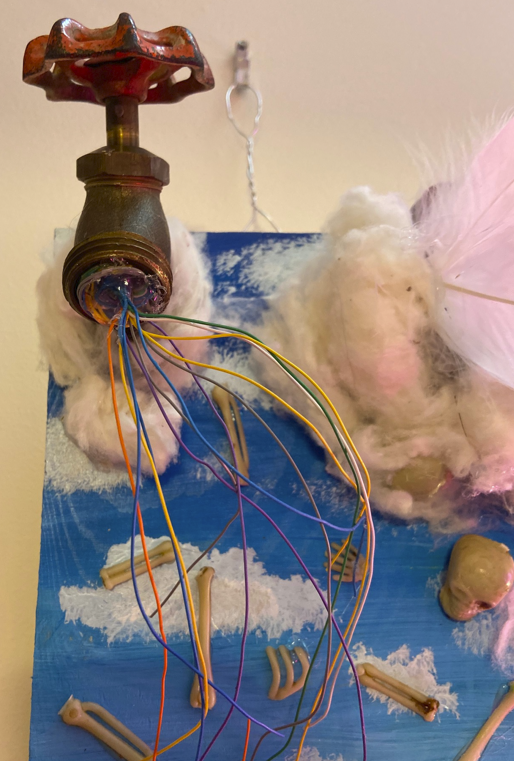Hyla Stories
7th Grade Portraits: Visual Metaphor & Process

Art with Kate begins and ends with a question. The first question is directed at students: “what is a portrait?” Their answers, says Kate, “are always highly contested, which I love!” The question launches a process that challenges student thinking, requires them to articulate that thinking (written and verbal), and invites them to assert their voices as artists. The portrait project also invited students to see that “concept is more important than end product, which is” says Kate, “really important when you’re working with visual metaphor.”
After debating the founding question and researching different portrait artists, students are asked to create their own. “I ask them to choose a person for whom they feel a tremendous amount of affection,” says Kate. “Students write about specific character traits and then as a group we talk about how visual metaphor is used. We look beyond facial expression at ways that metaphor can suggest but not tell people how to interpret a piece. There is a shared vulnerability in this process that I really appreciate.” Next students choose materials for their pieces. “We explore how material can communicate in different ways,” says Kate. “For example, we look at a lock, and then a lock without a key, or a lock that is open. We looked at a clock as a metaphor and what changes if it’s broken.”
Evidence of this process is on vivid display at Hyla where the finished portraits hang together on a gallery wall in a collective exhibition. The public showing “provides context for the exploration as a whole,” explains Kate, allowing 7th grade artists to see their own work in a new way, and also allowing them to witness how others receive it. “It’s the sweetest thing to see them visit their own art and each other’s,” said Kate. “We get to hear them talk about how lighting changes the pieces. And it’s not just the 7th grade artists – the 6th graders come through knowing they will get to work up to this project, and the 8th graders come, and they are all asking questions.” The very pieces that themselves began with a question now provoke new ones with each visitor, which was Kate’s intention all along. “We want art to communicate something, but we want art to raise questions more than we want it to provide answers. And I love that. To me that is successful art.”
This unit introduces students to the method and process they will return to next year as 8th graders when they complete a year-long art installation, from concept to creation to public viewing.
